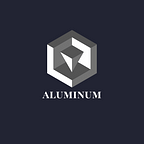Why are JAXA the Japan Aerospace Exploration Agency , ESA , Roscosmos and the Canadian Space Agency using our Transparent Aluminum ‘AION’ ?
Why is ALON even used on Spaceships?
ALON is the hardest polycrystalline transparent ceramic available commercially. Its combination of optical and mechanical properties makes this material a leading candidate for lightweight high-performance transparent armor applications such as bulletproof and blast-resistant windows.
The perfect example is the windows for the spaceships. The glass itself allows the light not to reflect. The retention of electromagnetic radiation — light, in addition to other things — is one of the fundamental impacts of electromagnetism. This interaction happens when electromagnetic energy is changed over to warm or another sort of energy inside a retaining material (for example, during electron excitation).
Coal, dark paint, and carbon nanotube exhibits — likewise known as Vantablack — look dark since they retain the energy of the episode light nearly totally. Different materials, like glass or quartz, have no retaining properties and accordingly look straightforward.
When a light emission autonomous force hits a straightforward article, the light doesn’t get consumed however is dispersed by the material — a wonder brought about by the unitary property of the dissipating grid. It ended up, in any case, that if the power of the occurrence shaft differs with time in a specific style, the unitary property can be upset, at least for quite a while. Specifically, if the power development is dramatic, the all-out occurrence of light energy will collect in the straightforward material without leaving it. That being the situation, the framework will show up totally engrossing from an external perspective.
To show the impact, we inspected a dainty layer of a straightforward dielectric also, determined the force profile needed for the retention of the occurrence light. The computations affirmed that when the episode wave force develops dramatically, the light is neither communicated nor mirrored. That is, the layer looks entirely engrossing regardless of the way that it comes up short on the rea retention limit. Notwithstanding, when the dramatic development of the episode wave plentifulness stops (at t = 0), the energy secured in the layer is delivered. “Our hypothetical discoveries seem, by all accounts, to be fairly strange.
Up until we began our research, we were unable to try and envision that it is feasible to ‘pull off such a stunt’ with straightforward construction. Nonetheless, it was the science that drove us with the impact. Who knows, electrodynamics may well hold other intriguing wonders.” The aftereffects of the examination not just widen our overall comprehension of how light carries on at the point when it associates with regular straightforward materials, yet additionally have a wide scope of down-to-earth applications. To give a model, the aggregation of light in a straightforward material may help plan optical memory gadgets that would store optical data with no misfortunes and delivery it when required.
The second thing is speed. At the point when an airplane goes through the air, it makes a progression of pressing factor waves before the airplane and behind it, like the bow and harsh waves made by a boat. These waves travel at the speed of sound and, as the speed of the article expands, the waves are constrained together, or packed, on the grounds that they can’t escape each other’s way rapidly enough. In the long run, they converge into a solitary stun wave, which goes at the speed of sound, a basic speed known as Mach 1, and is roughly 1,235 km/h (767 mph) adrift level and 20 °C (68 °F). If we look at the sound wall tunnel, the sonic boom, which releases a high-energy shockwave can shattered windows. Transparent Aluminum can handle more than 1.2 kPa therefore sonic boom won’t affect him.
